Posts Tagged: blueberries
Blueberry open house attracts farmers to Kearney
Manuel Jimenez, University of California Cooperative Extension advisor in Tulare County, hosted the annual spring blueberry open house at the UC Kearney Agricultural Research and Extension Center May 23.
The event featured a tasting tour of dozens of blueberry varieties, review of an ongoing mulch variety trial, information about hoop houses and a first look at a new research project in which the most commonly grown commercial blueberries are grafted on a rootstock with greater tolerance for California's alkaline soils. Read more about the blueberry rootstock trial on the UC Food Blog.
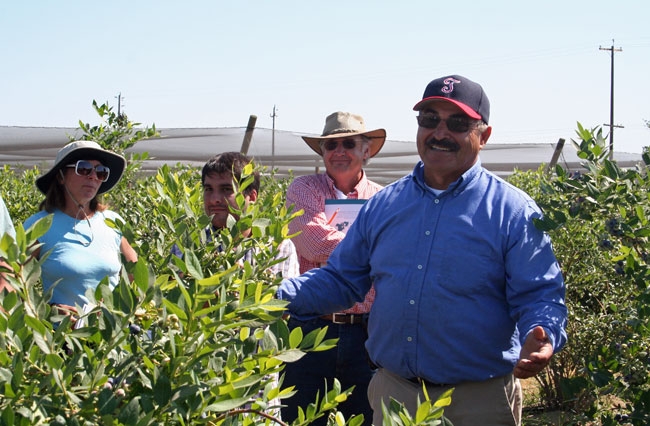


Late season blueberry field day features rabbiteye varieties
Some people say rabbiteye blueberries get their nickname from the circle on the blossom end the fruit. Others say the fruit's tendency to turn pink before going blue is reminiscent of a rabbit's eye. Whatever the reason, late ripening rabbiteye blueberries can provide San Joaquin Valley growers the ability to harvest fruit through the end of August, capturing a potentially lucrative market window, says UC Cooperative Extension farm advisor Manuel Jimenez.
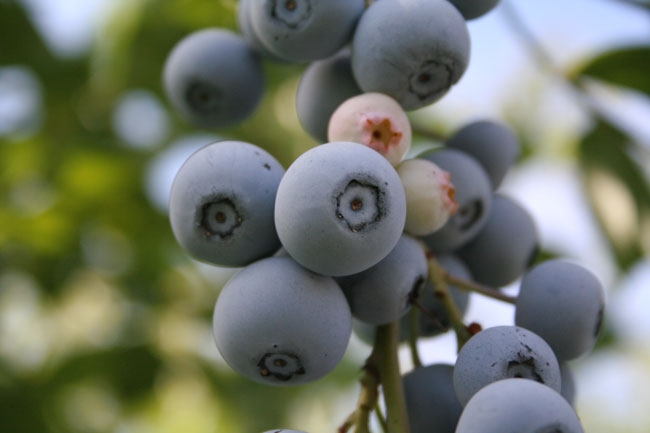
Porterville blueberry farmer Young Kwun attended the meeting with his farm manager Miguel Jaramillo Garcia. Kwun asked Jimenez how to replant blueberry bushes that had died.
"You can't do it," Jimenez replied. In the test plots, Jimenez and his staff replanted 60 blueberry bushes, and none of them survived. He tried a second time with the same result, and then inquired with blueberry growers around the country, finding that they also could not replant blueberries.
"Replanting is an issue with blueberries," Jimenez said. "We don't know what it is."
"You just saved me a bunch of money," said Kwun, whose 70-acre farm has a number of blank spots.
Kwun said he has missed the last few blueberry field days at Kearney, but that won't happen again.
"I'm thinking I should come every year," Kwun said. "I learned a lot."
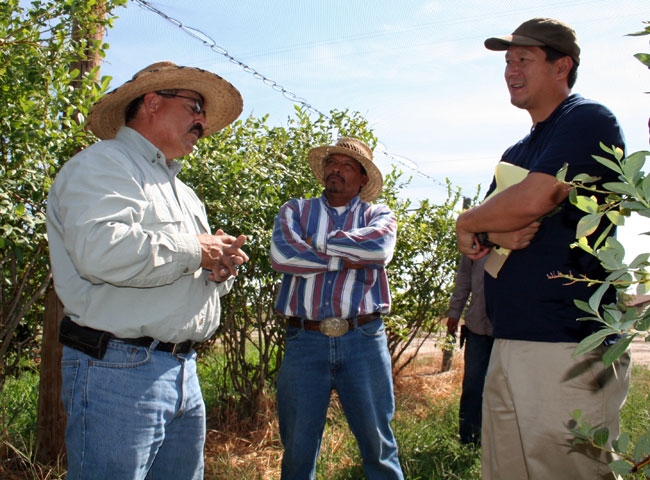
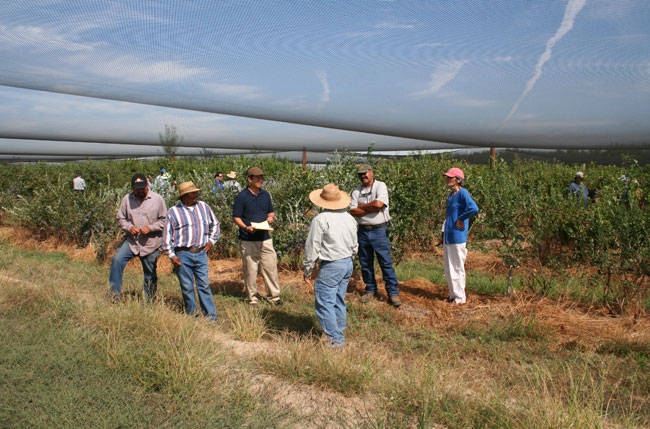
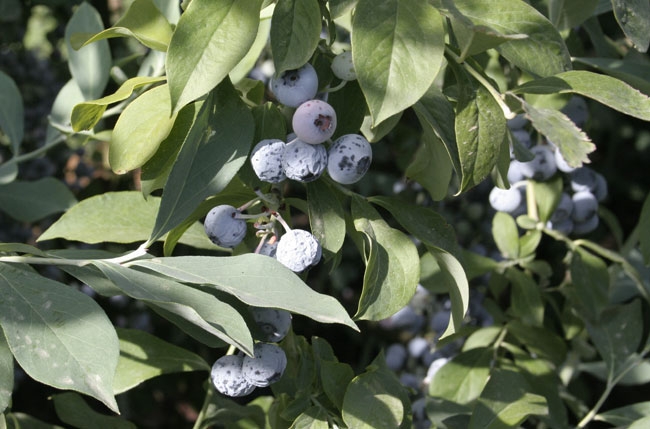
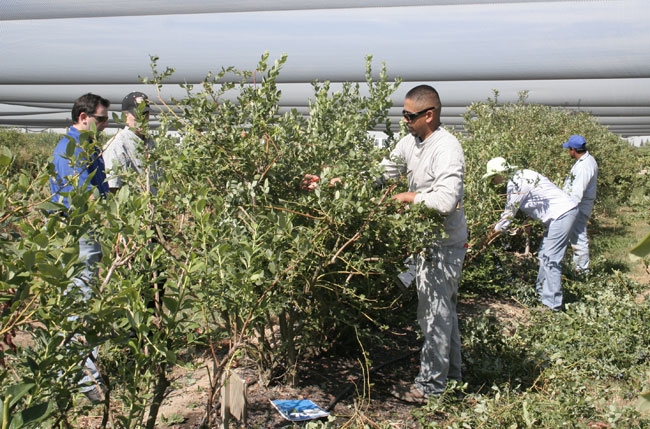
Blueberry meeting draws farmers to Kearney
UC Cooperative Extension farm advisor Manuel Jimenez hosted the annual blueberry meeting and field day at the UC Kearney Agricultural Research and Extension Center today. The event attracted about 75 farmers and industry representatives.
Blueberry experts from Oregon and North Carolina joined University of California scientists to present the latest research findings on blueberry nutrition, blueberry disease management, blueberry pest management and blueberry postharvest research.
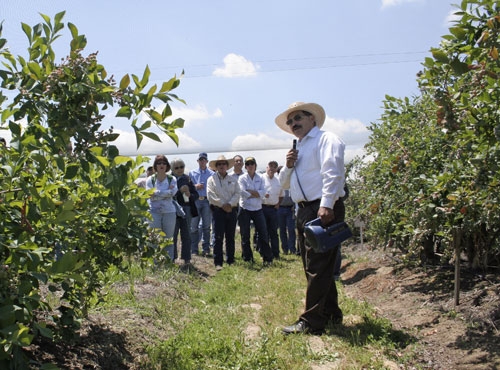
Manuel Jimenez leads a tour of his research planting.
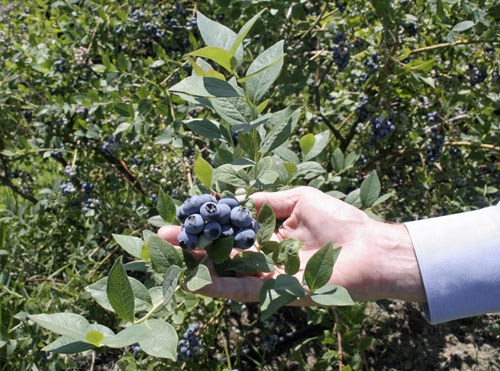
California blueberries ready to be harvested.
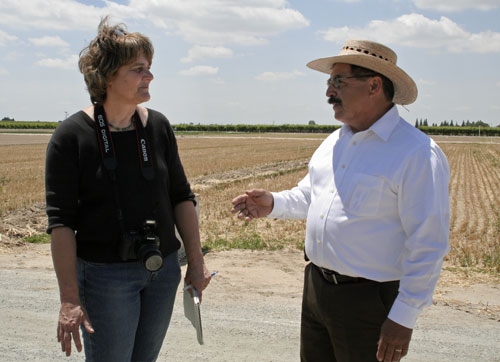
Freelance reporter Cecelia Parsons, left, talks blueberries with UCCE farm advisor Manuel Jimenez.
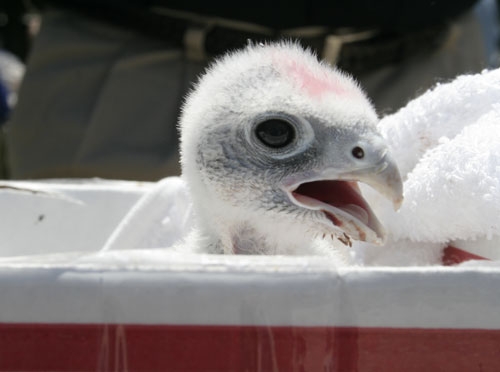
A 17-day-old falcon, above, was displayed at blueberry day by falconer Fred Seaman, manager of Airstrike Bird Control.
It's show time for California blueberries
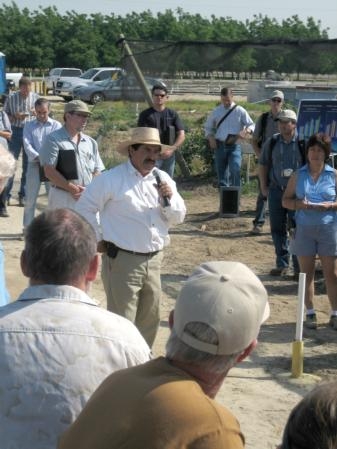
The milestone is significant, since the southern highbush blueberry cultivars grown in California originated in the Sunshine State. Southern highbush cultivars are well adapted to the California climate because they require fewer “chill hours” to produce fruit.
A leader in the development of the California industry, Jimenez has conducted blueberry observational trials – looking at yield and flavor characteristics – for more than a decade at the UC Kearney Agricultural Research and Extension Center in Parlier. In addition, the Kearney blueberry plantings have been the scene of ongoing studies on plant spacing, mulches and pruning, research that has helped farmers successfully establish the crop in the semi-arid San Joaquin Valley.
Jimenez will invite blueberry farmers and those considering entering the industry to Kearney this week to taste and compare 35 varieties of berries. Looking over the plots, Jimenez said it wouldn’t be difficult for a farmer to use information from the Kearney trials to select good-tasting berries that ripen sequentially for months, extending one farm's blueberry season from spring until mid-way through the summer.
“You could plant Snow Chaser, a very sweet, early variety, in hoop houses and start harvesting in the second or third week of April,” Jimenez said. “Next, Reveille could come into production. Southmoon is really late and then Centurion, a rabbit eye blueberry that’s small and sweet, would be ready in late July.”
On Wednesday, May 18, Jimenez will lead a tour to small and large commercial berry farms and packing facilities. Discussion topics include blackberry sunburn prevention, blackberry trellising systems, blueberry field design and layout, soil and water acidification, irrigation scheduling, harvest practices and blueberry packing and cooling.
A blueberry meeting on Thursday, May 19, features presentations on world production systems, blueberry nutrition, frost protection and blueberry market outlook. Following lunch, participants adjourn to visit the research plantings and industry exhibits.
For more information about the blueberry meetings this week at Kearney, see the flyer.
Meeting food safety requirements frees KARE from extensive reporting obligation
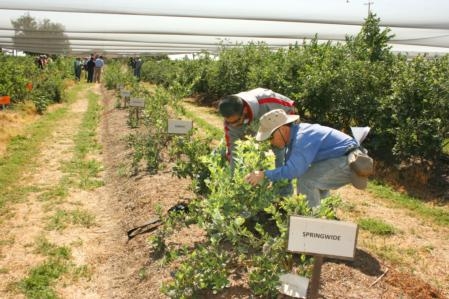
The audit, performed by the independent third party Primus, requires extensive documentation – including such details as inspection of field worker sanitation facilities and hygiene training, pre-harvest fruit sampling and laboratory testing for pesticide residues, records of worker safety training, employing expert pest control advisers using IPM practices performed by certified applicators, even the number of tractor hours involved in production, when the tractor oil was last changed and how the old oil was disposed. The report also documents details about crop inputs, such as pesticides used, the calibration of spray rigs, etc.
“This year because of a three-year history of more than 97 percent assurance in Global Food Safety requirements, we are not required to spend the many hours required in a full audit, submitting documentation and lengthy inspections to meet the standards,” said Alan Cary, the KARE safety coordinator.
Cary estimates this year’s exemption from documentation will save 40 hours of labor.
“I want to thank KARE’s farm operation staff for their support in continuously exceeding food safety requirements for products that are harvested and shipped from KARE to consumers around the globe,” Cary said.
The 3.61-acre blueberry plot at KARE is a research planting for UC Cooperative Extension farm advisor Manuel Jimenez. The plot provides not only valuable science-based information for California’s blueberry farmers and industry, but also some crop income to help offset the research costs.
